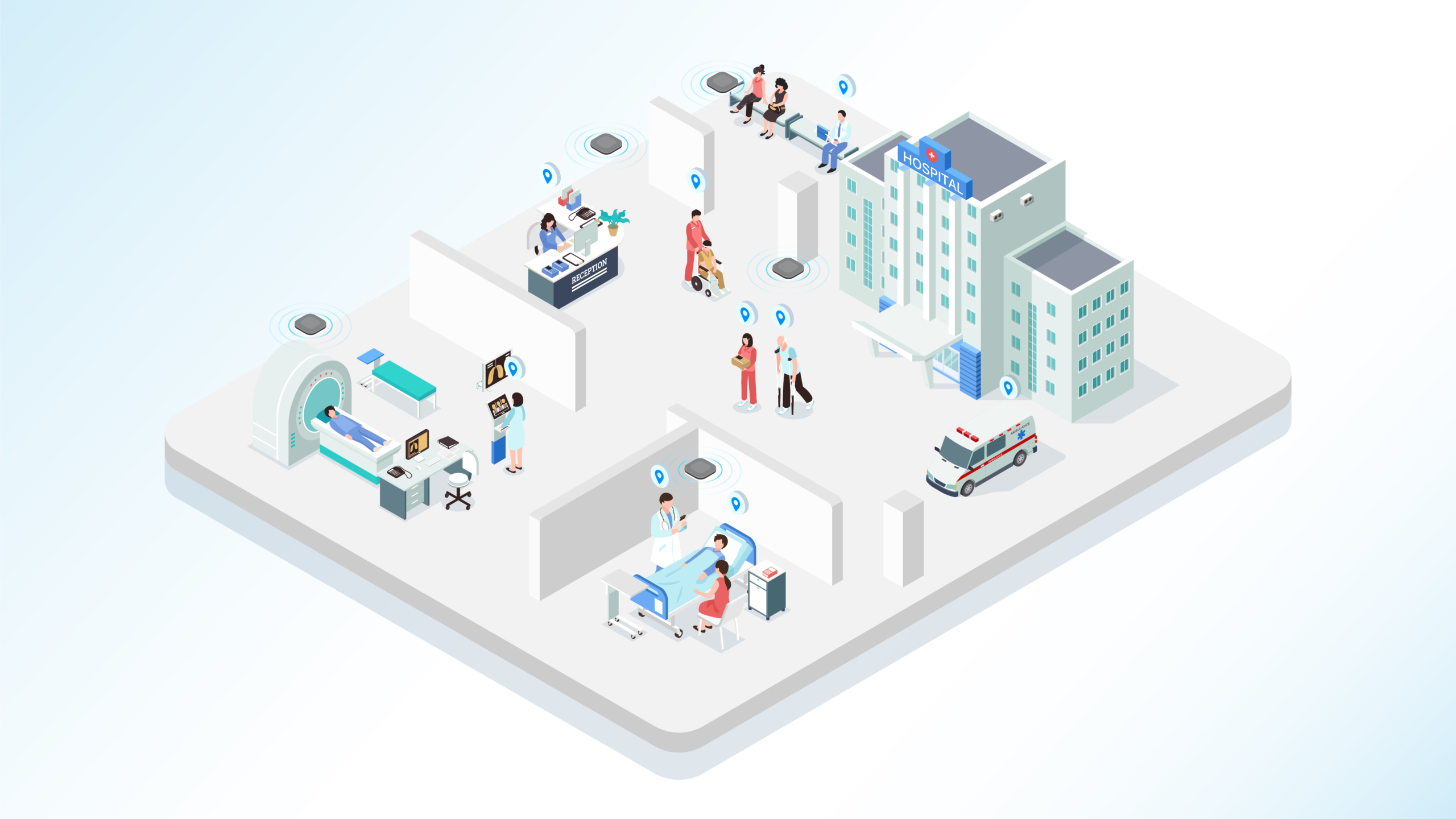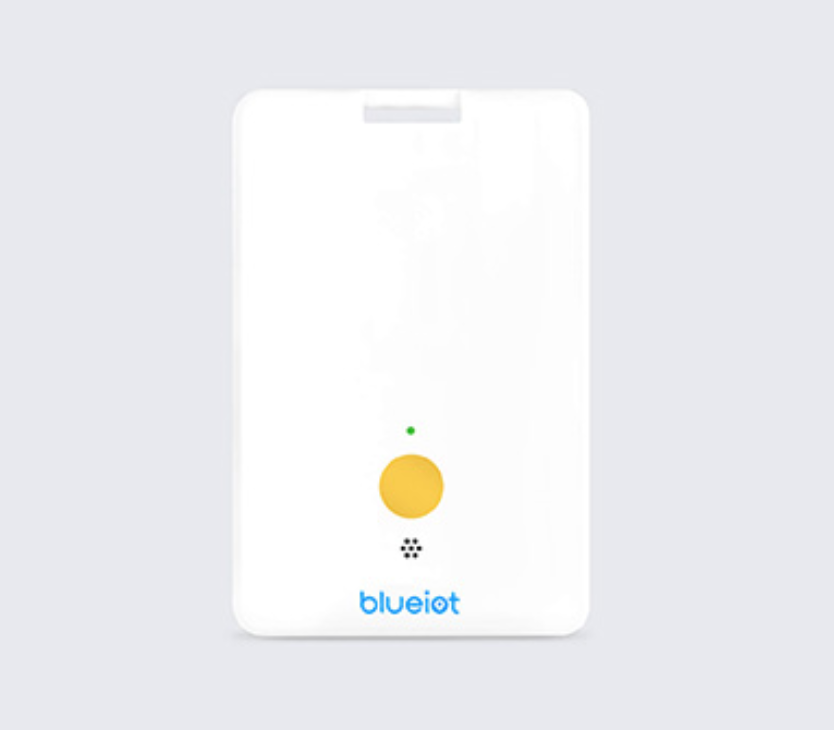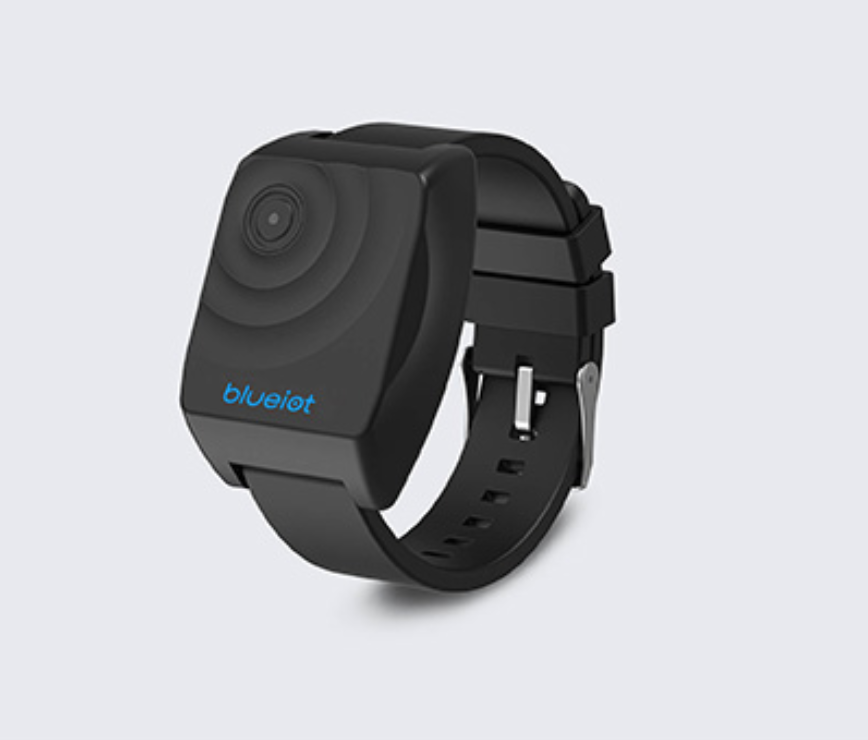Real-Time Location System technology helps hospitals save time and patients’ lives
It is widely held that “time is money” to highlight the important role efficiency can play in a business when it comes to making a profit or creating value. Similarly, we can all concede that “time is life” in the healthcare industry as doctors and nurses in the hospital race against time every day to save the lives of patients, particularly those who are critical ill. In this case, saving time can save lives. The relatively new Internet of Things technology is increasingly playing a pivotal role in improving hospital efficiency and in turn saving more lives.
Science and technology are advancing rapidly, which has led to the development of the so-called Internet of Things or IoT technology. IoT is beginning to be used in modern hospitals – and in older hospitals undergoing a digital transformation – to improve efficiency and in turn save more lives. Specifically, a high-precision real-time positioning system can help lead the digital transformation of a hospital and make it much more efficient.
A Real Time Location System, often referred to as RTLS, uses sensors, wireless communication technology and cloud computing technology to lock the position of targets in a specified space in real time or almost real time. In a healthcare setting these targets can be any hospital asset or members of staff and patients. Authorized users can obtain the location data of the target through the local computer or cloud platform to realize functions such as real-time positioning, trajectory tracking, regional statistics, and security control, helping operators improve productivity and management. RTLS is increasingly being applied in certain industries, such as health-care, manufacturing, logistics and warehousing, and transportation.
Real Time Location System’s are helping hospitals become more efficient
In the healthcare industry, all that is required is to deploy the positioning system in a designated area in the hospital, including installing the locating anchor in a higher or more elevated place, distributing the locating tags to people or attaching them to equipment, and running the software from the monitoring station or smart terminal. Then all of the above-mentioned functions can be achieved based on the collection and analysis of location data, thus contributing to the development of a ‘smart hospital’.
Patient protection
By attaching a locating tag to a patient, usually in the form of a wristband, the location data of that patient can be collected and sent for processing in real time. The path and time of the patient’s movements around the hospital, as they visit various departments, are recorded in Real-Time and can be assessed for patient behaviour analysis, which, among other things, can be very helpful to optimize patient flow through the hospital and the efficiency of the treatment process.
If a tag includes a function for monitoring vital signs, such as heart rate, for example, the system can issue an alarm when the data is abnormal. In this way medical staff can remain informed of the status and location of multiple patients simultaneously. Moreover, for infants, the elderly, mentally ill patients, or other patients that need special care, if they are tagged and leave the ward or they are detected by a so called “electronic fence” to have accidentally entered a prohibited or dangerous area, the system will also issue an alarm in real time and notify the staff to check.
Asset tracking
RTLS can also be used to track hospital assets such as valuable equipment and devices for diagnostics and treatment. The item needs only to be tagged. The ability to do this becomes particu-larly important in emergency cases when doctors or nurses need to locate a specific device or piece of mobile equipment, only to find that they do not know exactly where it is in the hospital since it was last used. This is not an uncommon scenario. Such instances can delay treatment to the detriment of the patient, as well as waste time and human resources.
Tracking hospital assets with RTLS overcomes this problem, reduces inefficient use of valuable human resources and goes a significant way to making the hospital operations more efficient.
As well as helping to efficiently locate hospital assets when they are needed, RTLS can also help secure a hospital’s assets against theft and loss. Each device or piece of equipment in the hospital’s inventory can be tagged and, in this way, they can be permanently tracked. From a financial perspective, this should be an attractive prospect to hospital management.
BlueIOT’s Bluetooth Location Tag / Badge with rechargeable lithium battery. Size: 85mm X 54mm X 6mm.
BlueIOT’s Bluetooth Location Tag / wristband
Staff management
Among the different types of locating tags, hospital staff can also wear a badge with a location tag which can make various daily tasks more efficient, such as automatically checking attendance and access control. In case of an emergency or if there are safety concerns, the staff member can press a button on the tag to call for assistance immediately.
Moreover, for doctors and nurses who are responsible for particular inspection tasks, these can be input into the system. Reminders will be sent to them as configured, and the time and path will be recorded and monitored to ensure the accuracy and standardization of the workflow.
Smart navigation
With RTLS deployed in the hospital, the inner space of the building can be accurately mapped. Any visitor entering the hospital can then efficiently navigate their way through the hospital via a mobile app and help them to locate specific departments with ease. It can even be extended to the hospital parking lot to help them locate a free parking space or to find their car when they leave.
Growing demand for RTLS
In recent years, the demand for RTLS has grown rapidly, especially in the medical sector. It not only meets the needs of hospitals to improve efficiency, safety and profitability, but also elevates the patient’s or visitor’s experience, and thus the hospital’s standing in the community.
RTLS plays a pivotal role in any hospital’s digital transformation and there is still much room for
growth in this field.
BlueIOT Technology specialises in RTLS
BlueIOT Technology (Beijing) is a world leading RTLS (Real-Time Location System) provider committed to developing high-precision locating products and solutions for indoor application scenarios like hospitals, logistics & warehousing, manufacturing, smart retail, smart buildings, etc.
BlueIOT’s locating system has an accuracy level down to 0.1 metre, which is 10 times more accurate than traditional Bluetooth technology. With patented locating gateways, its locating system is compatible with all Bluetooth 4.0 or above tags and supports the high-precision locating service for both IoT tags and Location-Based Service (LBS) phones. The system is also benefited by high capacity, low energy, low cost and small size.
As a member of Bluetooth SIG and AIA Industry, the company has mass-produced Bluetooth AoA locating products since 2020 and become the second largest provider in this respect. With an open ecosystem, the company aspires to provide the world’s ten billion Bluetooth terminals with a more accurate location experience and thus further empower all industries.
For more information, visit: www.blueiot.com





